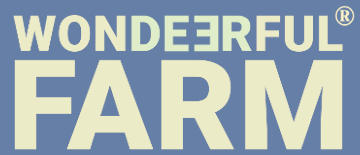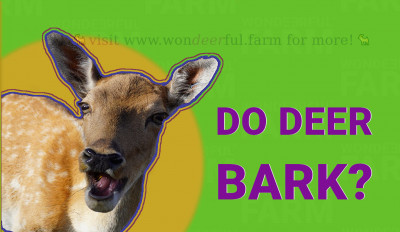When do Deer Sleep? Are They Nocturnal or Crepuscular?
» Deer stories » Deer behavior » When do Deer Sleep? Are They Nocturnal or Crepuscular?What time of day deer are most active is the question that might interest both hunters and wild life enthusiasts. A closely related question is when, where and how do these mammals prefer to sleep?
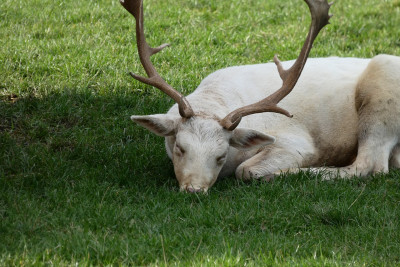
image credit: Krzysiek @ Pixabay
Let's give you a quick answer straight away: deer are considered predominantly crepsucular, but they are quite flexible in their sleeping and activity patterns.
Are Deer Crepuscular?
In zoology, a crepuscular animal is one that is active primarily during the twilight period. This is distinguished from diurnal and nocturnal behavior, where an animal is active during the hours of daylight and of darkness, respectively. [Wikipedia ]
Twilight hours (those just before and after sunrise and sunset) are thought to be the hours when deer are most active. This makes deer crepuscular.
"Based on rate of movement, deer had clearly defined crepusular activity patterns." [Journal of Mammalogy on mule deer (Odocoileus hemionus)]
However, this doesn't mean you can't see a deer venturing out during any other time of day or night. [National Geographic]
Studies indicate that deer adjust their behavioral patterns according to circumstances.
Variation in the time of day deer are most active is usually attributed to 2 factors:
- local weather
- human disturbances
"In winter, for instance, activity during the dawn period was significantly higher than in other seasons and daylight activity was significantly higher than at night. Nocturnal activity was highest in summer and lowest in winter." [The Journal of Biological and Medical Rhythm Research on European roe deer (Capreolus capreolus)]
"Sika deer showed consistent crepuscular activity patterns (i.e., dawn and dusk) during spring–summer and trimodal activity patterns (i.e., dawn, dusk, and midnight) in autumn throughout the study period. " [Scientific Reports on Sika deer]
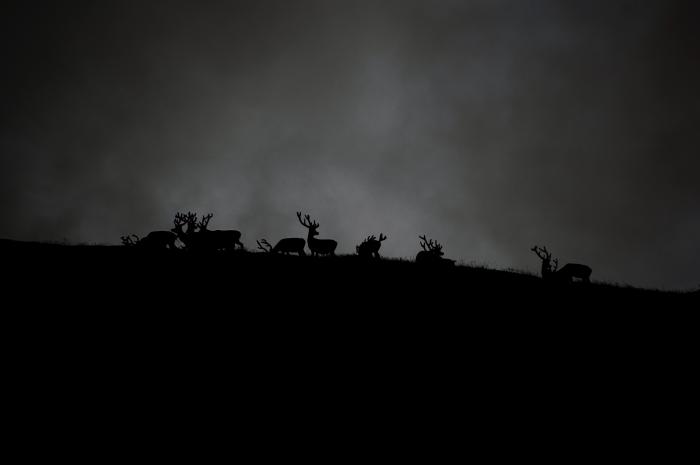
image credit: William Isted on Unsplash
Are Deer Nocturnal?
It is natural to assume deer are nocturnal after seeing them at night near the roads or hearing of a collision with a deer taking place at night, however they are most active at twilight in the early mornings or early evening before sunrise and after sunset. Nocturnal activity in deer can be viewed as supplemental / seasonal. For example, this author finds that: "Nocturnal activity was greatest in spring and summer, and decreased in winter." [ The University of Arizona on desert mule deer ]
Additionally, deer may choose to move at night if that is when heavy rainfall happens. When deer travel from one place to another, predators may write-off the noise of their movement through the forest as part of the storm.
Finally, deer adapt to a more noctural lifestyle to avoid predators, such as us humans! When they work out night time is when people disappear, they decide to go out and visit riskier areas at that hour.
"We show that translocated deer deviated from a crepuscular activity pattern and became increasingly nocturnal, and most active when villagers were not." [PubMed Central]
Similar shift to nocturnal schedule has been observed during deer culling periods.
Where and How do Deer Sleep?
Deer's preferred bedding spot is somewhere it can hide at least partially. Not out in the open. Ideally, these animals prefer to lie down with their backs against something (tree trunk, bush, tall grass, hill; on the farm - against the fence).
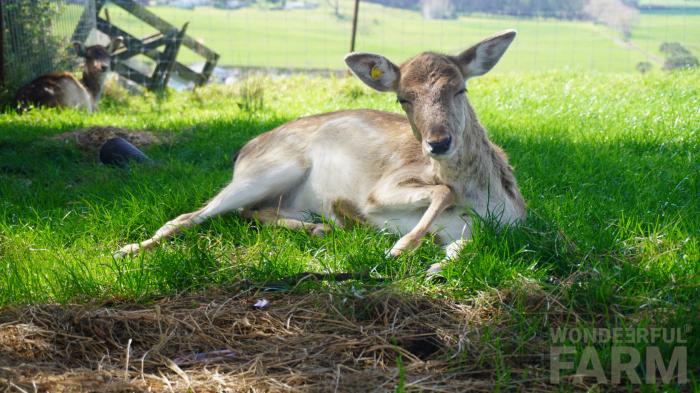
The best spots are usually taken by those higher in pecking order as deer herds have a hiarichical structure. Dominant bucks will sometimes kick another animal off its spot to claim it for themselves (or sometimes just to remind them who's boss).
When we observe our animals sleep in one big group, they're never cuddling up to each other, even mothers and fawns have space between them, even if it's quite cold. They're also all laying down facing different directions. We think this might be adaptational as the ability to monitor many directions as well as quickly get up and flee must be crucial for these prey animals to survive in the wild.
Deer are always on alert and prepared to flee.
In the next gif, you can see how the herd can rise up immediately when they get spooked. In this case it was one frightened deer that arrived. This was pretty quickly dismissed as a false alarm, though, and deer carried on relaxing.
Do Deer Sleep Standing Up?
If we ever saw anything resembling that happen we'd take a video for you!🦌
What you're asking is, do deer have "stay apparatus" (a series of muscles, ligaments, and tendons that lock the limbs of a large herbivore in place, allowing it to “stay” in a standing position). The stay apparatus allows animals to relax most their muscles and have a light sleep without collapsing. Among the species that have that ability are horses, giraffes, elephants and flamingos. Deer are not able to lock their muscles to doze whilst standing up.
They sleep and take naps lying down on their sides.
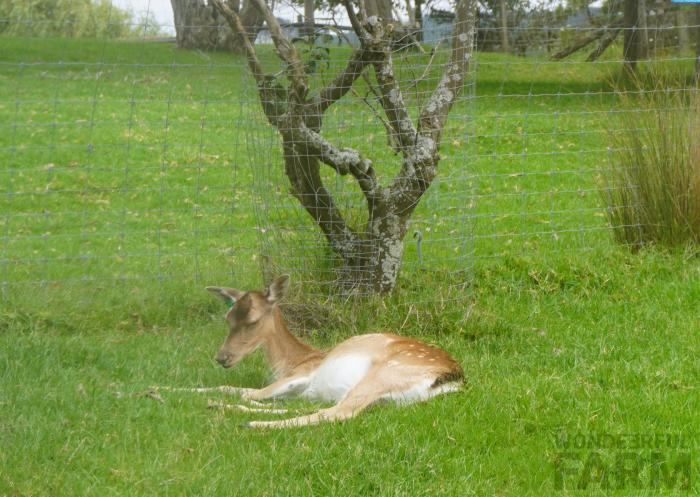
The positions deer sleep in resemble those of dogs.
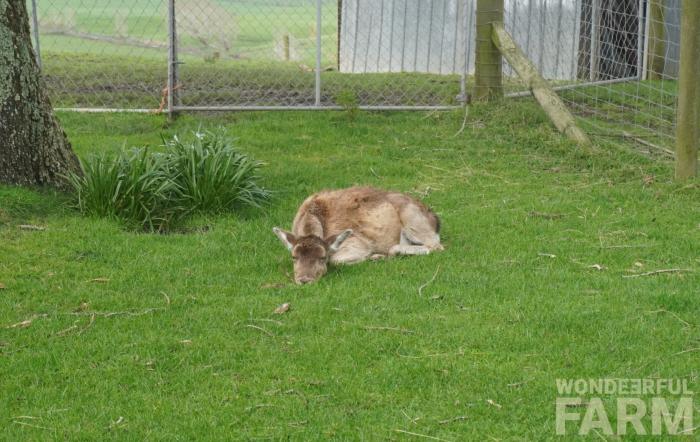
They may curl in their limbs for warmth or they may choose to lay on their side with their legs stretched out. Head is sometimes resting on the ground, sometimes on their body and sometimes deer taking a nap with their heads erect. In fact, most of the time deer will keep their heads raised.
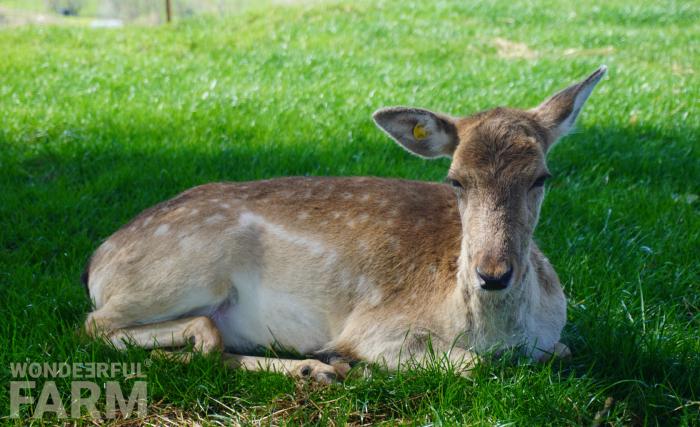
Observations on Our Farm Deer Sleeping Habits
Fallow deer on our farm seem to be taking breaks for about 40 minutes every couple of hours. Deer can sit down and rest, take a catnap at any time of the day or night, getting their rest in chunks.
It seems they don't like being active on summer afternoons. You'll find them chilling in the shade of the trees, laying their heads down. Other times, when weather conditions are pleasant they might keep browsing.
🦌 Curious fact: deer yawn.
We're not watching our deer through the night, but occasionally when we get up to get a glass of water, we may hear them out the window, ripping off grass, sneezing and carrying on with usual deer noises. We don't let deer close by the house in fawning season as mothers can be quite vocal calling their fawns and that takes place at night as well as any other time. Fawns also make cute noises while drinking milk (but you don't necessarily want to hear that during the night).
Deer prefer to sleep in groups, but sometimes may chose to bed alone.
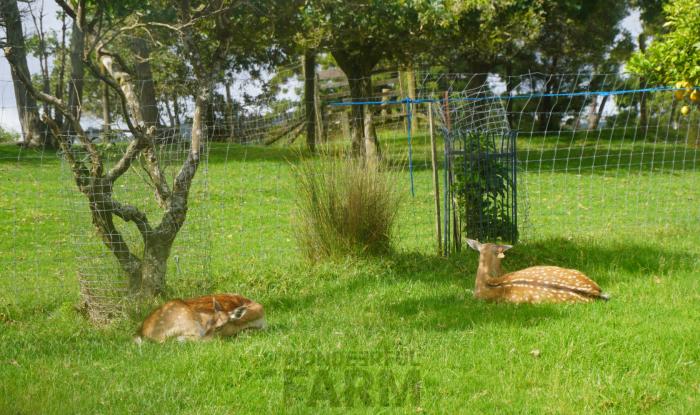
Deer have multiple places they sleep depending on several factors.
When our eldest doe is allowed to stay alone or with a mate in our yard, she tends to favor a few spots for bedding. One - on the high ground by a log during the day, one under a lemon tree when it's hot and one by the bamboo thicket when it's raining or blowing heavily. We've also seen our deer hiding from strong winds in the valley. So deer move where it's more pleasant, safer or there's food. Naturally, right? :)
You can observe our deer resting in this post with relaxing deer videos collection.
Last modified 2023-09-05 at 14:46
Published 25 November 2022
Add your comment
More «Deer behavior» stories
Do Deer Bark? Listen!
What souds do deer make that are similar to barking? Can whitetail, fallow and muntjac deer all bark? What other noises do they make and what do they mean?
read more...
Deer Like to Chew
This is just a random observation post about deer loving to chew inedible things.
read more...
Deer Chronicles: Secrets of Hierarchy, Friendship, and Feuds
Sharing the captivating world of deer relationships, from intricate hierarchies to unexpected rivalries. Discover their social dynamics.
read more...
 '
'